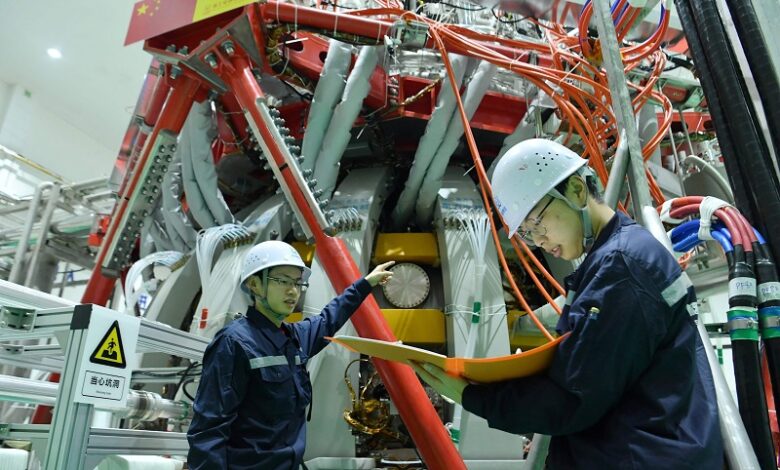Chinese Scientists Achieve Groundbreaking Milestone in Nuclear Fusion with HL-3 Tokamak

News Mania Desk/ Agnibeena Ghosh/18th June 2024
Chinese scientists have achieved a significant breakthrough in nuclear fusion, marking a major milestone with the Huanliu-3 (HL-3) tokamak, often referred to as China’s “artificial sun.” For the first time globally, they have discovered an advanced magnetic field structure using this cutting-edge device. This accomplishment stems from the inaugural round of international joint experiments conducted on the HL-3 tokamak, which was opened to global collaboration at the end of 2023.
According to Chinese Media Group, these groundbreaking experiments involved collaboration with 17 prestigious research institutes and universities worldwide. Notable participants included the French Alternative Energies and Atomic Energy Commission and Kyoto University in Japan. This collaboration underscores China’s dedication to international cooperation in tackling the global energy crisis.
The HL-3 tokamak, independently designed and developed by China, is the country’s largest and most advanced nuclear fusion device. It replicates the sun’s energy generation process through controlled nuclear fusion, a revolutionary technology with immense potential to address global energy and environmental challenges.
In August 2023, the HL-3 tokamak achieved a significant milestone by successfully operating under a plasma current of 1 million amperes. This experiment solidified China’s leadership in magnetic confinement nuclear fusion research. The latest breakthrough is critical for controlling and confining the superheated plasma within the tokamak, a necessary step for sustained nuclear fusion reactions.
Controlled nuclear fusion has long been viewed as the ultimate solution in energy research, promising a clean and practically limitless power source. China has been actively promoting international cooperation in nuclear energy, exemplified by recent partnerships with France, including joint research initiatives and contributions to the International Thermonuclear Experimental Reactor (ITER) project.
By opening the HL-3 tokamak to international collaboration and actively participating in global nuclear energy initiatives, China is demonstrating its commitment to advancing clean energy solutions and meeting the world’s growing energy demands. The innovative magnetic configuration discovered by the international team of scientists represents a major advancement in plasma physics and fusion technology. This development, reported by China Media Group, is a significant step towards achieving clean energy sources.
Meanwhile, the global race to harness the power of the “artificial sun” continues to intensify. Recently, South Korea’s Korea Superconducting Tokamak Advanced Research (KSTAR) reactor reached a major milestone by achieving temperatures seven times hotter than the sun’s core. The Korea Institute of Fusion Energy (KFE) emphasized the importance of developing technology to sustain high-temperature and high-density plasmas, where fusion reactions occur most actively for longer durations.
The HL-3 tokamak’s recent achievements highlight China’s pivotal role in the future of nuclear fusion. The innovative magnetic field structure discovered during the experiments is a breakthrough that could bring the world closer to realizing the potential of nuclear fusion as a viable energy source. This progress is essential for sustaining the high-temperature and high-density plasma necessary for continuous fusion reactions.
In conclusion, China’s advancements with the HL-3 tokamak and its commitment to international collaboration in nuclear fusion research are pivotal steps towards addressing the global energy crisis. The successful operation of the HL-3 tokamak at a plasma current of 1 million amperes and the discovery of an advanced magnetic field structure represent significant milestones in the journey towards clean, inexhaustible energy. As the world continues to explore the potential of nuclear fusion, these developments underscore the importance of international cooperation and innovation in achieving sustainable energy solutions for the future.






